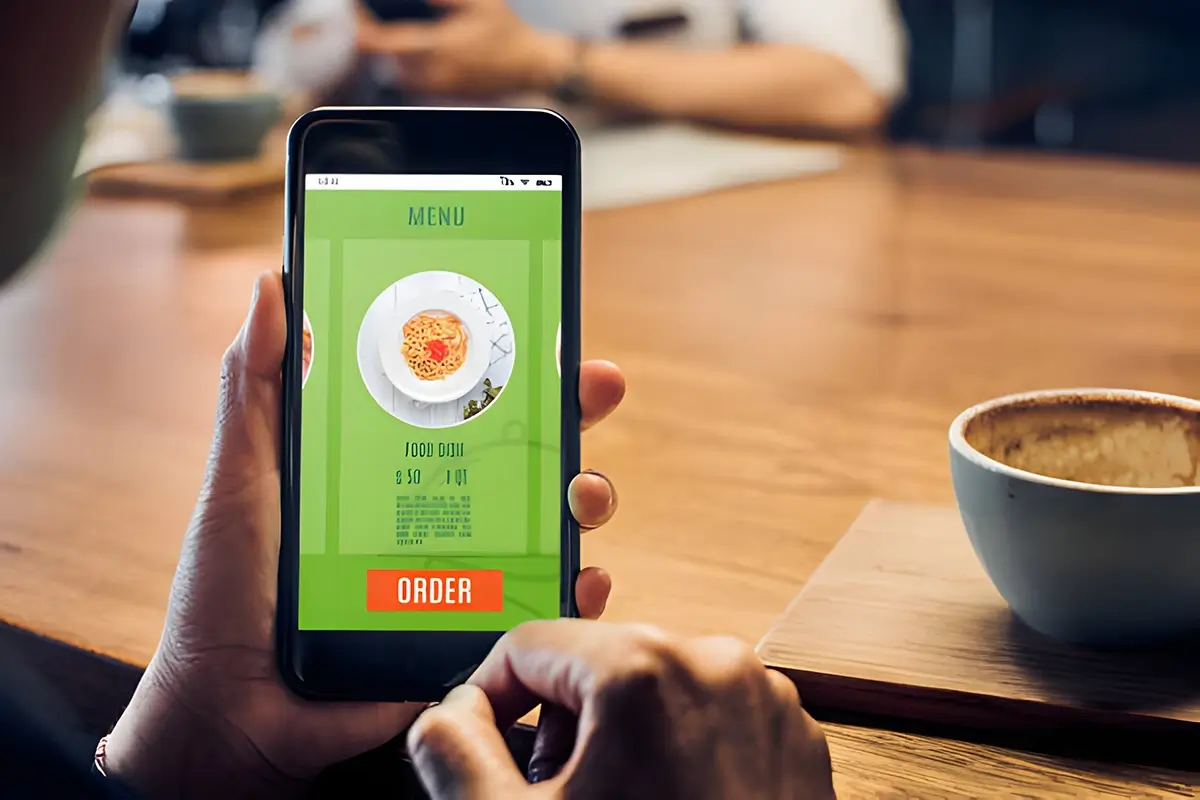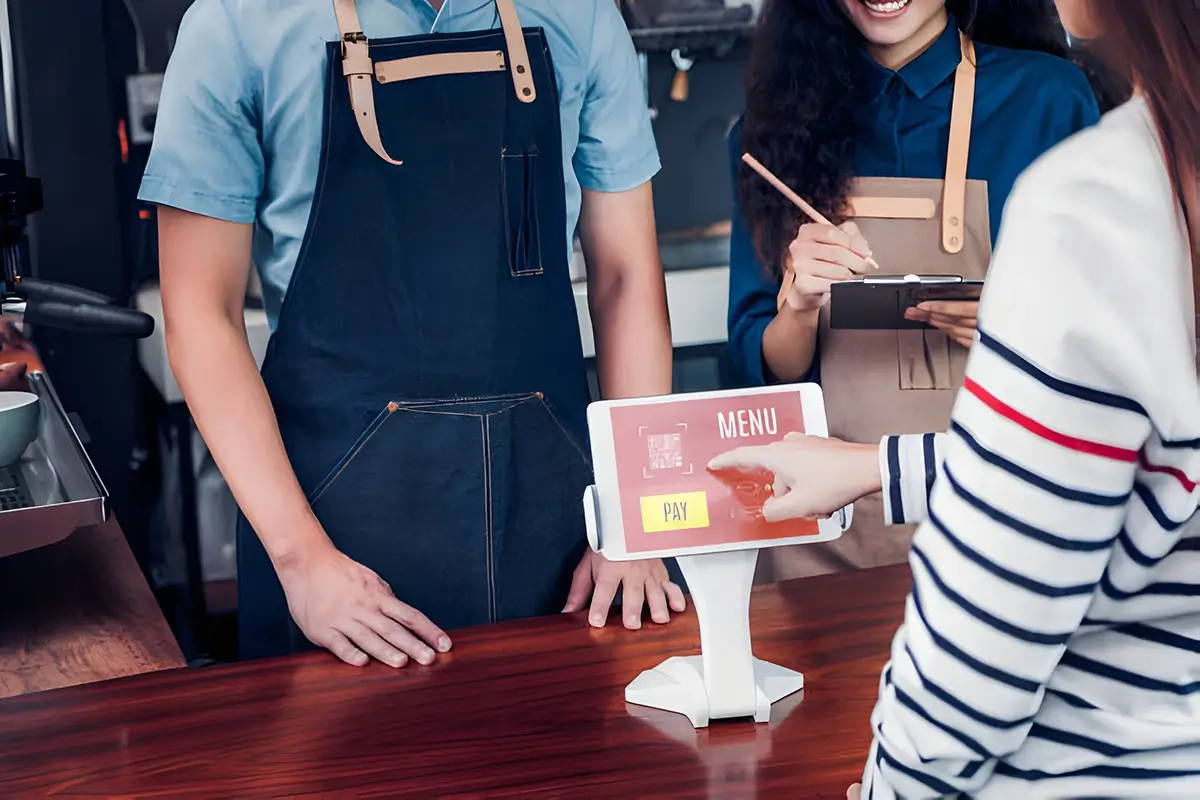The Future of Dining: How Order and Pay at the Table Technology is Revolutionizing the Restaurant Experience

Technology has undoubtedly revolutionized various industries, and now it’s poised to transform the restaurant experience as well. Imagine a dining experience where you can order and pay for your meal directly from your table, without the need to flag down a server or wait in line. This is made possible by the emerging trend of order and pay at the table technology.
Order and pay at the table technology is changing the way we dine out, providing a seamless and convenient experience for both customers and restaurant owners. With just a few taps on a tablet or smartphone, diners can browse the menu, customize their orders, and pay their bill – all from the comfort of their seat. No more waiting for a server to take your order or struggling to split the bill with your friends.
Not only does this technology enhance convenience, but it also increases efficiency for restaurants. By streamlining the ordering and payment process, restaurants can serve more customers, reduce wait times, and improve overall customer satisfaction.
As order and pay at the table technology continues to advance, it’s clear that the future of dining will be marked by increased efficiency, convenience, and a more enjoyable restaurant experience for all.
Benefits of Order and Pay at the Table Technology for Restaurants
The benefits of order and pay at the table technology for restaurants are numerous and significant. Firstly, it allows for increased efficiency in the ordering process. With traditional methods, servers have to take orders manually, which can be time-consuming and prone to errors. However, with order and pay at the table technology, customers can input their orders directly into a digital interface, eliminating the need for manual transcription and reducing the chances of mistakes. This streamlines the process and ensures that orders are received accurately.
Secondly, this technology facilitates faster table turnover. With the ability for customers to order and pay at the table, they can complete their dining experience at their own pace. This means that once they are finished with their meal, they can pay and leave without waiting for a server to bring the bill, resulting in quicker table turnover. This is especially beneficial during peak hours when restaurants are crowded and time is of the essence.
Furthermore, order and pay at the table technology enables restaurants to collect valuable data about customer preferences and behaviors. By analyzing this data, restaurants can gain insights into popular menu items, customer demographics, and ordering patterns. This information can then be used to optimize menu offerings, improve marketing strategies, and enhance overall customer satisfaction. This data-driven approach can greatly benefit restaurants in staying competitive and adapting to changing customer preferences.

The Rise of Contactless Dining
The recent COVID-19 pandemic has accelerated the adoption of contactless dining options, further fueling the rise of order and pay at the table technology. As people became more cautious about touching surfaces and interacting closely with others, the demand for contactless solutions in all aspects of life, including dining, increased significantly.
Order and pay at the table technology provides a solution to this demand by minimizing physical contact and reducing the need for face-to-face interactions. Customers can simply use their own devices to access the digital menu, place their order, and make payment, eliminating the need to handle physical menus or exchange credit cards or cash. This not only enhances safety and hygiene but also provides peace of mind to diners, knowing that they have control over their dining experience.
Additionally, contactless dining options align with the growing trend of digitalization and convenience in our everyday lives. Consumers now expect seamless and efficient experiences, and order and pay at the table technology delivers just that. It allows diners to have full control over their dining experience without the need to rely on busy servers or wait in long lines. This convenience factor is a major driving force behind the adoption of this technology by both restaurants and customers.
How Order and Pay at the Table Technology Works
Order and pay at the table technology typically involves the use of digital interfaces, such as tablets or smartphones, provided by the restaurant or accessible through a mobile app. These interfaces are equipped with intuitive software that allows customers to browse the menu, make selections, customize their orders, and process payment securely.
To begin the process, customers can either scan a QR code at their table or access the restaurant’s app to connect to the digital interface. Once connected, they are presented with the menu options, which may include descriptions, images, and pricing details. Customers can then make their selections, customize their orders, and indicate any dietary preferences or allergies.
After placing their order, the kitchen receives the order directly, eliminating the need for servers to manually relay the information. This reduces the chances of miscommunication and speeds up the preparation process. Once the meal is ready, servers can deliver the order directly to the table, further enhancing efficiency and minimizing wait times.
When it comes to payment, customers can securely enter their payment information into the digital interface. The payment process is encrypted to ensure the security of personal and financial data. Some systems even allow for the splitting of bills, making it easier for groups of diners to divide the expenses accurately.
Examples of Order and Pay at the Table Technology in Action
Order and pay at the table technology is already being implemented by various restaurants around the world. One notable example is the fast-food chain, McDonald’s, which has rolled out self-order kiosks in many of its locations. These kiosks allow customers to browse the menu, customize their orders, and pay without the need to interact with a cashier. This not only enhances convenience for customers but also increases efficiency for the restaurant by reducing the time spent taking orders and processing payments.
Another example is the popular casual dining chain, Chili’s, which has implemented tabletop tablets in many of its restaurants. These tablets allow customers to browse the menu, place their orders, request refills, and even play games while waiting for their meals. This technology has proven to be a hit among diners, as it provides entertainment and convenience, while also improving order accuracy and reducing wait times.
Outside of chain restaurants, smaller establishments are also embracing order and pay at the table technology. For instance, independent cafes and coffee shops are adopting mobile apps that allow customers to order and pay ahead of time, ensuring that their orders are ready for pickup when they arrive. This has become particularly popular in urban areas where time is often limited, and people are looking for quick and efficient dining options.
The Impact of Order and Pay at the Table Technology on Customer Experience
Order and pay at the table technology has a significant impact on the overall customer experience. Firstly, it enhances convenience by providing customers with full control over their dining experience. They can take their time browsing the menu, making selections, and customizing their orders without feeling rushed or pressured. This leads to a more relaxed and enjoyable dining experience.
Additionally, this technology reduces wait times, as orders are placed directly from the table and transmitted to the kitchen instantly. Customers no longer have to wait for a server to take their order or for the bill to arrive at the end of the meal. This streamlined process ensures that customers can make the most of their time and reduces frustration often associated with waiting.
Order and pay at the table technology also improves order accuracy. With the traditional method of taking orders verbally, there is always a chance of miscommunication between the server and the kitchen. However, by allowing customers to input their order directly into a digital interface, the chances of errors are significantly reduced. This results in a higher level of customer satisfaction, as they receive exactly what they ordered.
Furthermore, this technology allows for seamless customization of orders. Customers can easily make modifications to their orders, such as requesting specific ingredients or dietary accommodations. This flexibility enhances the dining experience, as customers can tailor their meals to their preferences and dietary needs.
Challenges and Considerations for Implementing Order and Pay at the Table Technology
While order and pay at the table technology offers numerous benefits, there are also challenges and considerations that restaurants need to address when implementing this technology.
One major consideration is the initial investment required to adopt this technology. Restaurants need to purchase the necessary hardware, such as tablets or smartphones, and ensure that they have a reliable internet connection to support the digital interfaces. Additionally, there may be ongoing costs associated with maintenance, software updates, and technical support.
Another challenge is the learning curve for both customers and staff. Some customers may be unfamiliar or uncomfortable with using digital interfaces to place their orders and make payments. It is important for restaurants to provide clear instructions and support to ensure a smooth transition. Similarly, staff members need to be trained on how to operate and troubleshoot the technology to provide assistance when needed.
Security and privacy are also important considerations when implementing order and pay at the table technology. Restaurants need to ensure that the payment process is secure and that customer data is protected. This includes implementing encryption protocols, complying with privacy regulations, and regularly monitoring and updating security measures.
Lastly, restaurants should consider the impact on their staff. While order and pay at the table technology can increase efficiency and reduce the workload for servers, it may also lead to a reduction in staff requirements. It is crucial for restaurant owners to communicate with staff members and involve them in the decision-making process to minimize any potential negative impact.
The Future of Order and Pay at the Table Technology
As technology continues to advance, the future of order and pay at the table technology looks promising. Innovations such as voice recognition and artificial intelligence have the potential to further streamline the ordering process. Customers may be able to place their orders simply by speaking to a virtual assistant, eliminating the need to manually input their selections.
Additionally, the integration of loyalty programs and personalized recommendations can enhance the customer experience. By analyzing customer data and preferences, restaurants can offer targeted promotions and suggest menu items that align with individual tastes. This level of personalization can greatly improve customer satisfaction and loyalty.
Furthermore, the use of biometric authentication, such as fingerprint or facial recognition, can enhance security and simplify the payment process. Customers may no longer need to enter their payment information manually, as their identity can be verified through biometric data, providing a seamless and secure payment experience.
The future of order and pay at the table technology is also likely to involve more integration with other technologies. For example, restaurants may incorporate augmented reality (AR) to provide interactive menus or virtual reality (VR) to create immersive dining experiences. These technologies have the potential to revolutionize the way we perceive and interact with food, enhancing the overall dining experience.
Case Studies of Restaurants Successfully Implementing Order and Pay at the Table Technology
Several restaurants have already successfully implemented order and pay at the table technology, showcasing the benefits and potential of this innovation.
One such example is Eatsa, a fast-casual restaurant chain that focuses on automation and efficiency. Eatsa allows customers to place their orders through self-service kiosks or mobile apps and then pick up their food from automated cubbies. This eliminates the need for traditional cashiers and servers, reducing labor costs and wait times. Eatsa’s implementation of order and pay at the table technology has been well-received, with customers appreciating the speed and convenience of the experience.
Another success story is Wagamama, a popular Asian-inspired restaurant chain. Wagamama has embraced order and pay at the table technology by equipping each table with a tablet that allows customers to browse the menu, place their orders, and pay. This technology has not only improved efficiency but also provided an interactive and engaging dining experience. Customers can view images and descriptions of each menu item, customize their orders, and even play games while waiting for their food.
Conclusion: Embracing the Future of Dining with Order and Pay at the Table Technology
Order and pay at the table technology is revolutionizing the restaurant experience, providing numerous benefits for both customers and restaurant owners. The convenience, efficiency, and enhanced customer experience offered by this technology are driving its adoption in restaurants of all sizes and types.
As the world becomes increasingly digital and contactless, order and pay at the table technology is poised to become the new norm in dining. By embracing this technology, restaurants can stay ahead of the curve, meet evolving customer expectations, and create a more enjoyable and seamless dining experience for all.



